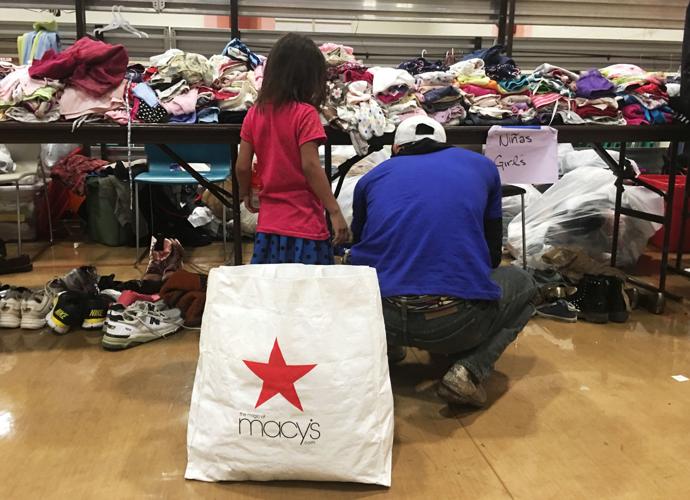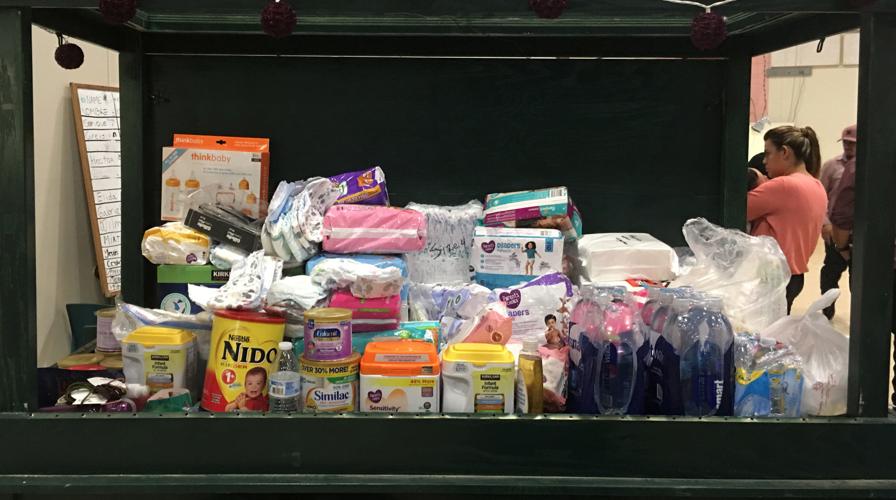Hundreds of migrant families — many apprehended in huge groups along the Arizona border with Mexico — have been released over the last several days by the Border Patrol, officials say.
This includes nearly 200 people, mostly from Guatemala, who were dropped off at a Tucson church starting on Saturday. Phoenix was expecting about 170 families this week to be transferred there from Yuma.
The release of about 700 migrants statewide, generally pregnant women and parents with children, appears to be part of a national directive, said Teresa Cavendish, of Catholic Community Services here.
Immigration and Customs Enforcement attributed what it called “decades of inaction by Congress,” to its inability to detain and promptly remove families that have no legal basis to remain in the United States. “As a result,” said spokeswoman Yasmeen Pitts O’Keefe, “family units continue to cross the border at high volumes and are likely to do so, as they face no consequence for their actions.”
Minors can’t stay in Customs and Border Protection custody for more than 72 hours, nor can they be held in adult detention centers. Immigration and Customs Enforcement has about 3,300 beds for families in three facilities in Texas and Pennsylvania — none are in Arizona.
The agency has alerted local and state officials and reached out to local nonprofits that are prepared to help with transportation and other services and that “release determinations will continue to be made on a case by case basis,” Pitts O’Keefe said.
ICE has been releasing families and other vulnerable populations when it doesn’t have bed space since the numbers first started to rise several years ago.
What was different this weekend was the sudden volume.
So far, the response from the community here has been great, Cavendish said: “We have enough people to help.”
Tucson volunteers quickly organized over the weekend to receive the parents and young children, including babies. They set up tables with donated clothes sorted by size and gender, toys, books and food in a converted gym.
Families were able to shower, something several said they had not done for days while being held at Border Patrol holding facilities, and get some rest.
Parents who pose no security risk and are released with their children must provide the address of their U.S. destination and are required to report to a local immigration officer near that destination within a couple of weeks to continue the processing of their case. All of them will be issued a notice to appear in immigration court, Pitts O’Keefe said.
Some of the migrants released in Tucson said they had arrived at the border anywhere from five to 10 days before and had been detained at several facilities, moved every few days, before being given an appointment with immigration officials. Many of them are fitted with a GPS ankle tracker.
The Border Patrol can’t comment on specific cases, said Daniel Hernandez, spokesman for the agency’s Tucson sector, but the agency tries to move families as quickly as possible.
Although the larger numbers pose a logistical and manpower challenge, he said. Generally families apprehended in the Tucson sector are taken from west of the Lukeville port of entry to the Ajo station, which can require dozens of vehicles to transport them. From there, they are brought to Tucson, which can be a three-hour drive. The migrants are fingerprinted and photographed. Depending on their background, they can the be released to ICE, which can send them to groups like Catholic Community Services.
Once released, volunteers help the migrants contact a friend or family member who can buy them a bus ticket to places like Texas, Tennessee and Florida. But one of the issues now, Cavendish said, is that the bus system is overwhelmed trying to accommodate so many families as well as recent storms in the east.
“Buses are sold out by the time they get here,” she said. Catholic Community Services runs Casa Alitas, a shelter that opened about four years ago when families started to arrive at the border, especially in Texas, and the government didn’t have enough bed space to detain them.
Similar to what happened this weekend, the Department of Homeland Security dropped off nearly 200 immigrants, mostly women and children, over a few days in May 2014.
But back then, there wasn’t a place like Casa Alitas, where migrants may spend the night until they figure out their next step. Instead, the government would drop them off at the Tucson Greyhound station, leaving them to find their own way to cities across the country to report to immigration offices there.
Leah Sarat with the Restoration Project in Phoenix said they are happy that situation is different than in 2014 and that ICE is more willing to partner with local organizations. “It’s a much more manageable situation than in 2014,” she said. The group helps people released from detention and has partnered with local churches and organizations to help with the initial intake of the families before they take them to the bus station.
The number of mostly Central American families fleeing increased violence and entrenched poverty has continued to rise in the last four years. Instead of evading the Border Patrol, families usually wait for agents to detain them so they can ask for asylum or they go directly to a port of entry.
The Border Patrol has apprehended more than 90,000 parents and children along the southwest border in the first 11 months of the fiscal year. That’s up from the 78,000 apprehended in fiscal 2016, when the numbers peaked.
In an attempt to deter parents from making the journey with their children, the Trump administration implemented a “zero-tolerance” policy in April to prosecute everyone who crossed the border illegally which led to the separation of more than 2,600 children.
After intense criticism, the president signed an executive order in June halting the practice.
Numbers in places like Yuma did seem to go down after word spread that the government was separating parents from their children. But it doesn’t appear to have had as much of an effect in the Rio Grande Valley, where by far the largest number of families are coming through.
It’s also difficult to gauge the impact of the policy as a whole because it coincided with some of the hottest months of the year, which is a time when migration slows down.
At the same time, more families found themselves waiting longer, at times for more than a week, to be processed at ports of entry.
While the September numbers have not been released, they could be higher due to a recent trend of larger groups of families coming through.
Last month, Border Patrol agents in the Tucson and Yuma sectors reported apprehending about 1,000 adults and children on five separate days.
And just last week, agents in the Yuma sector found 164 parents with their children west of the San Luis Port of Entry.






